It is an unseasonably warm winter morning in Hong Kong, and as opposed to the thick coats the locals are usually spotted wearing around this time of the year (as though the city were located at a much higher latitude), T-shirts and shorts are still a common sight. On this particularly sunny day, we follow some people on a recently-completed extension of the city’s outdoor escalator system and enter what is arguably Hong Kong’s most talked-about architectural conservation project in decades.
The former Central Police Station compound looks fresh and inviting from the outside, and through its western entrance right above Old Bailey Street we walk past a female guard and find ourselves at the main courtyard of the complex, the former parade ground to be precise, decorated with a tall Christmas tree circled by big red and white gift boxes. Curiously, a larger-than-life monkey – probably a grey langur – is hanging from one of the tall buildings looming over the heritage compound, its gleaming golden skin making it look as though it were petrified by Midas himself.
Taking a 360° look around the compound, one quickly realizes that this place is special. Why is it still standing while everything around it is tall? How did it manage to avoid the wrecking balls that demolished many of Hong Kong’s structures of a similar vintage? After all, it is situated in a prime location, just a few minutes’ walk from the central financial district.
In a period when the Hong Kong economy grew by leaps and bounds, particularly in the 1970s all the way to the early 1990s, many such buildings were torn down in the land-scarce city to make way for modern glass and concrete skyscrapers. What many present-day visitors to Hong Kong are unaware of is that elegant and beautiful edifices once stood on the same plots of land now occupied by those high-rise structures that have now defined the city’s skyline. The former General Post Office on Pedder Street which was commissioned in 1911 – purportedly using the plans intended for the General Post Office in Nairobi – is an example of a grand British colonial building that succumbed to Hong Kong’s construction boom. Many locals remember it as the most beautiful building in the city before its destruction in 1976.
However, after traveling around parts of Asia for some time now, based on my observations I see that a heritage preservation movement has finally gained momentum in this part of the world, which has long been associated with rapid development at the cost of invaluable architectural gems. Businesses, especially the bigger ones, have acknowledged the importance and value of conserving the past, and people today have a better understanding of why doing so will benefit them as well – they know preserving structures of historical significance will make their cities less dull and more interesting, therefore boosting their pride as well as a sense of local identity.
One example of architectural heritage that survives to this day in Hong Kong is the Central Police Station compound, a 19th– to early 20th-century construction that consists of the former Central Police Station, former Central Magistracy and Victoria Prison. From the first structure in 1864 to 1925 when the final section was completed, the entire compound comprises 16 buildings with the prison being the oldest and longest-serving correctional facility in Hong Kong until its closure in 2006. Among the people that once found themselves interned within its walls was Ho Chi Minh, Vietnam’s communist revolutionary leader.
Revitalization of the compound was first suggested by Swire Properties, a subsidiary of Swire Group, one of Hong Kong’s largest conglomerates whose business empire encompasses property, aviation, food, shipping, agriculture and mining industries among many others. However, this plan was heavily criticized by the public for its blatant commercialization. Then in 2010, another organization stepped in: the Hong Kong Jockey Club. The club is one of the oldest and most influential institutions in Hong Kong with a history dating back to 1884. Operating as a non-profit organization, the club conducts hundreds of horse races every year at its two race tracks in the territory, and holds a legal monopoly over horse race and football betting.
As the city’s biggest taxpayer as well as community benefactor (the club has donated a large sum of money to areas such as the arts, culture, education, environmental protection, health, and youth development) the Hong Kong Jockey Club Charities Trust initiated a plan to transform this relic from the British colonial era into a center of heritage, arts and leisure. Commissioning the Basel-based firm Herzog & de Meuron, whose impressive portfolio includes the conversion of London’s Bankside Power Station to the Tate Modern, the futuristic-looking Allianz Arena in Munich, as well as Beijing’s iconic Bird’s Nest stadium which was built for the 2008 Olympics, the club began renovation works at the former Central Police Station compound in 2011.
Dubbed the most expensive revitalization project in Hong Kong, it was only in May 2018 that the largely-completed compound opened its doors to the public. Named Tai Kwun which means “big station”, after the historical colloquial nickname for the complex, it now houses retail spaces, museums, galleries, and new, purpose-built structures dedicated to art exhibitions and programs. The two contemporary buildings, both clad in perforated aluminium bricks inspired by the surrounding red brickwork, are bold additions to the compound and successfully create a visually-pleasing juxtaposition with the rest of Tai Kwun.
More than half a dozen exhibitions are planned to be held at JC Contemporary – the larger of the two modern buildings inside the compound. But this morning we opt for the former Police Headquarter block where an exhibit on Kwang Kung, a venerated general from China’s Three Kingdoms period in the third century AD, is being held on the underground floor (which is actually the ground floor when seen from the north thanks to Hong Kong Island’s sloping terrain).
We’ve been exploring Tai Kwun for two hours now, and the sun is already high. We’re ready to leave the compound, but not without taking another look at the well-executed restoration work, and a big mango tree that has been growing for many years at one corner of the parade ground. The mood is undeniably calm and uplifting at this place, and now Hong Kongers can proudly say that right in the heart of the city they now have a new oasis to escape from its frenetic pace.
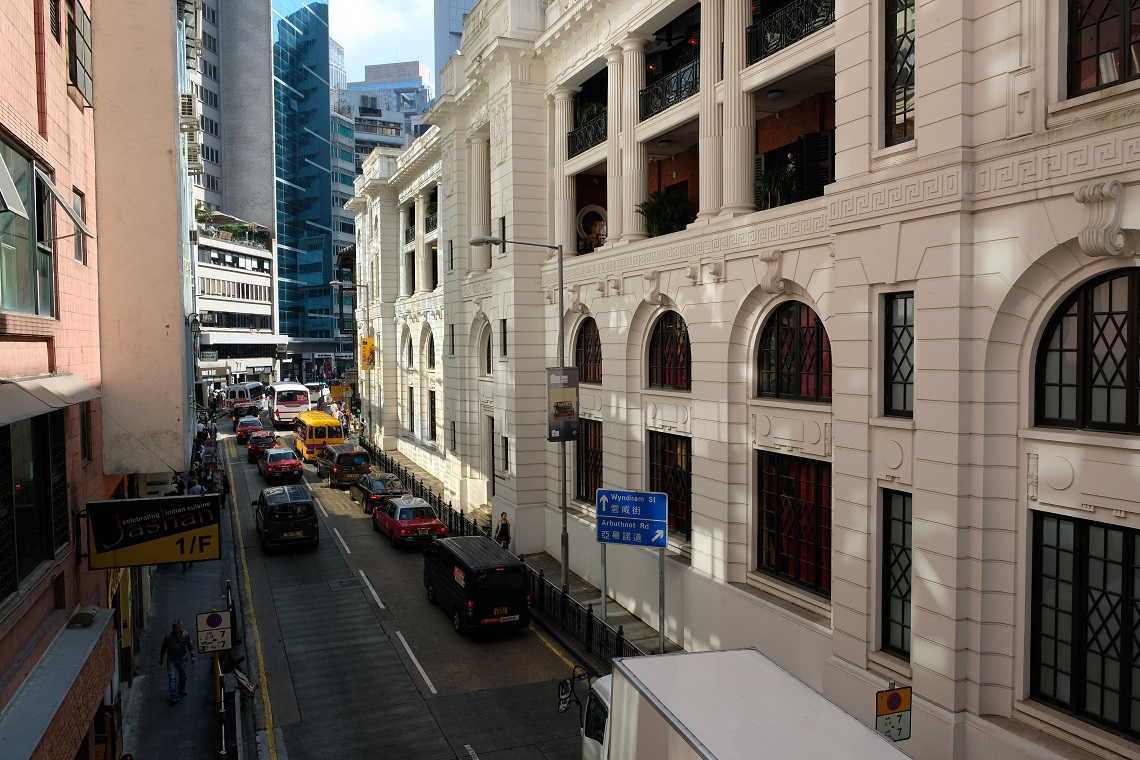





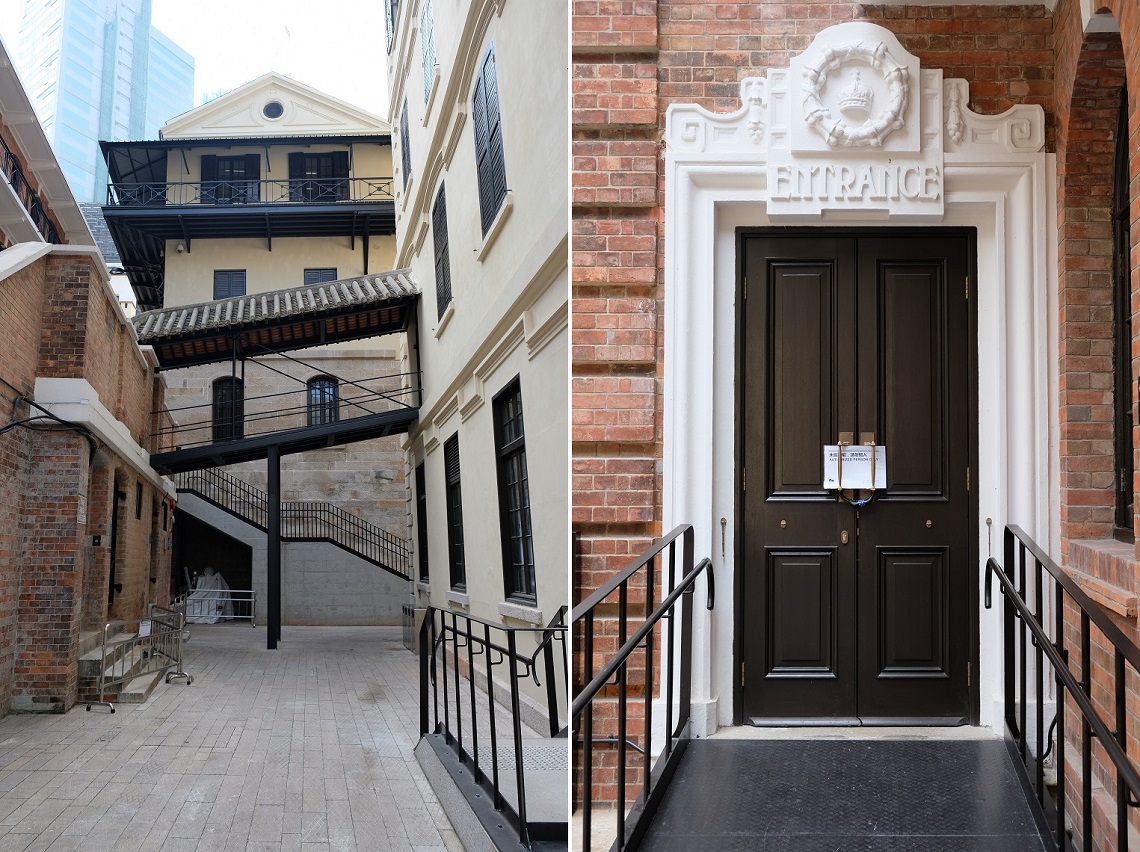
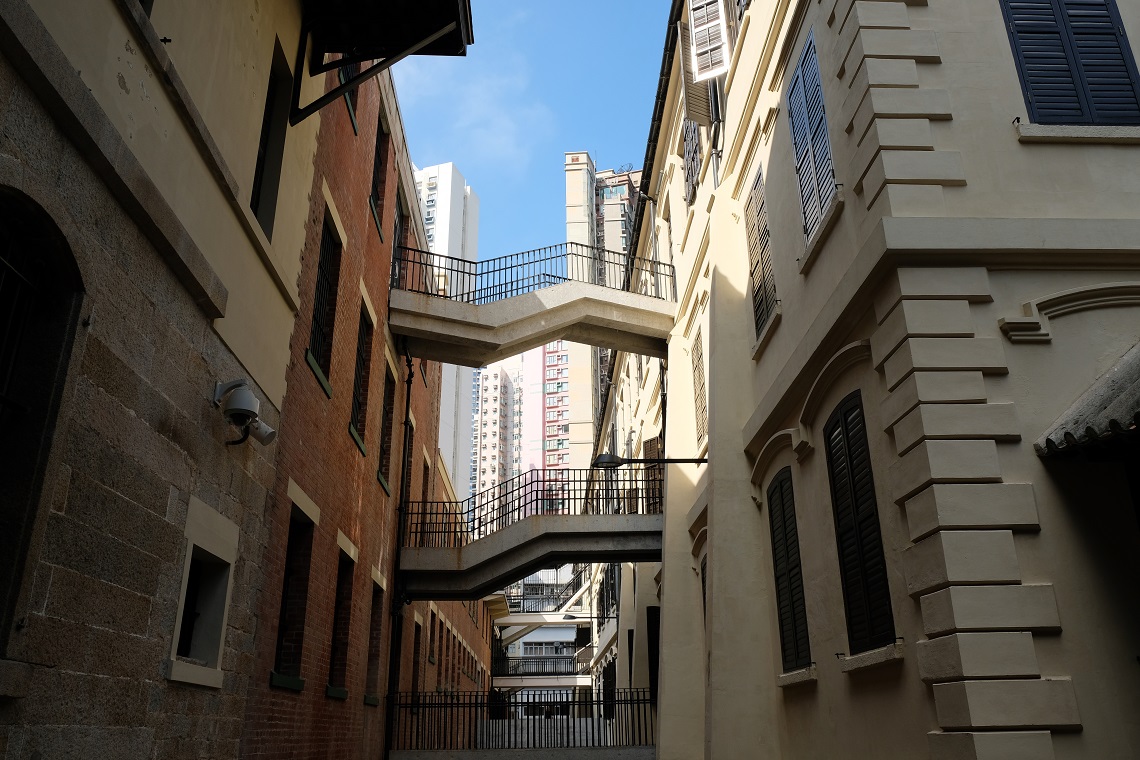
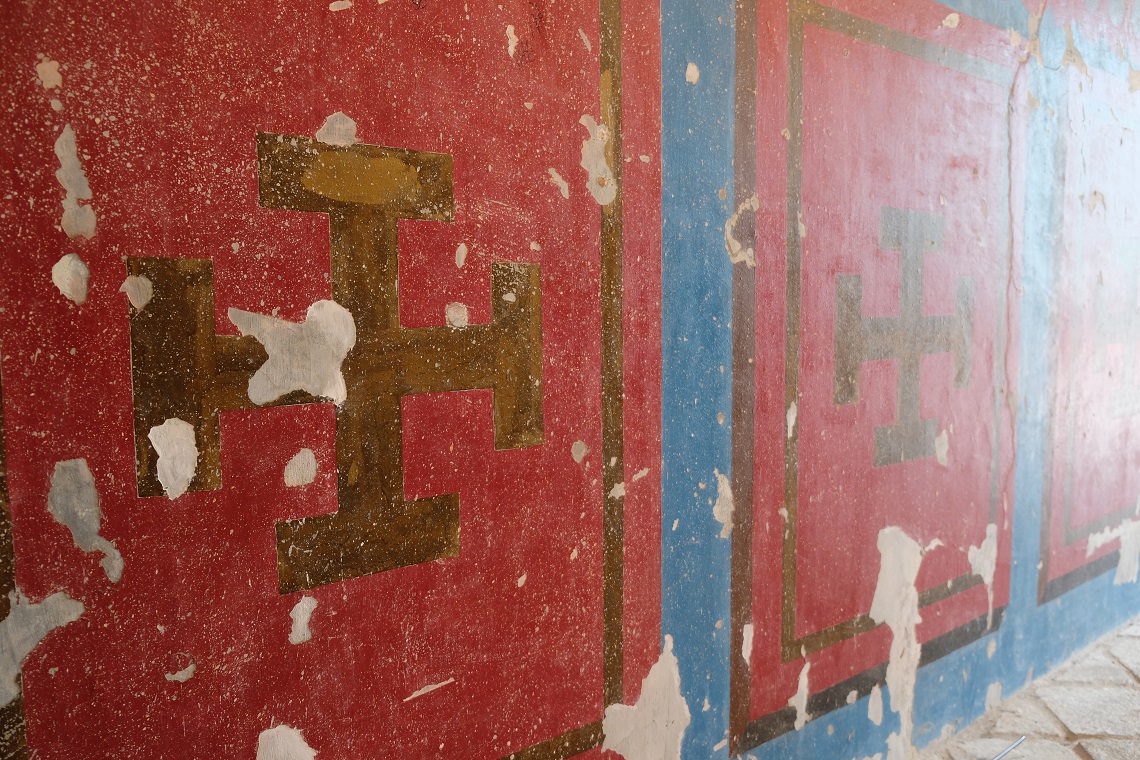

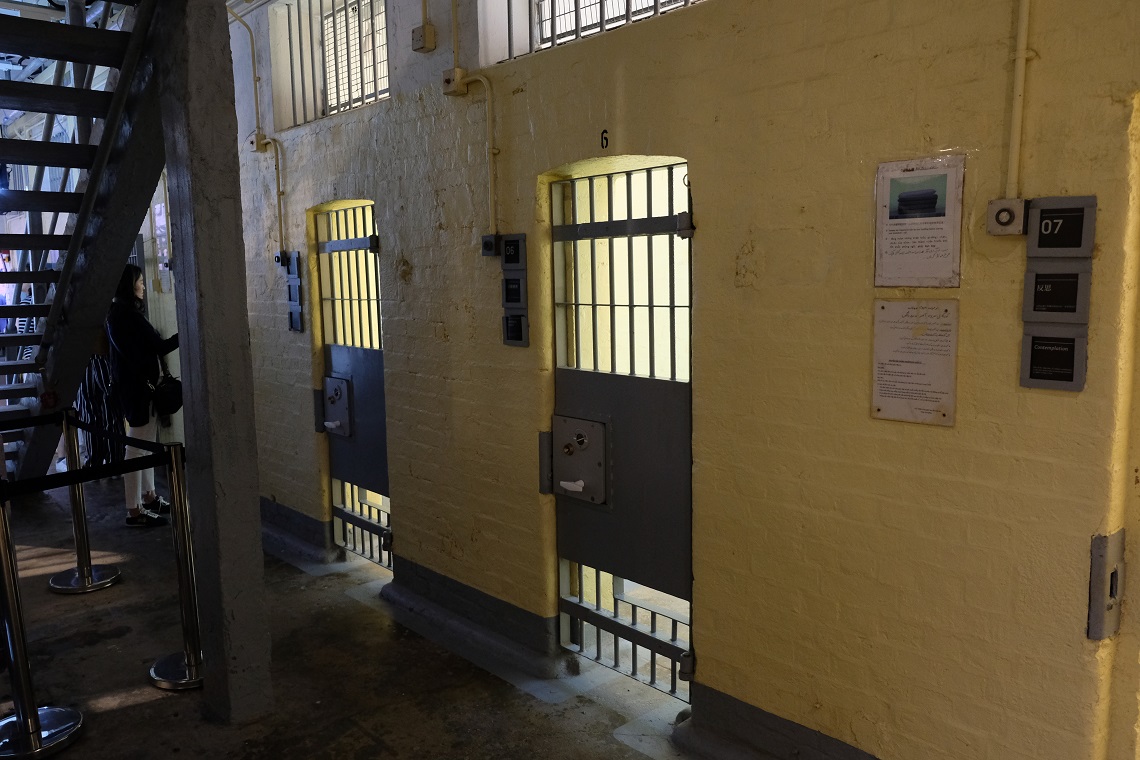

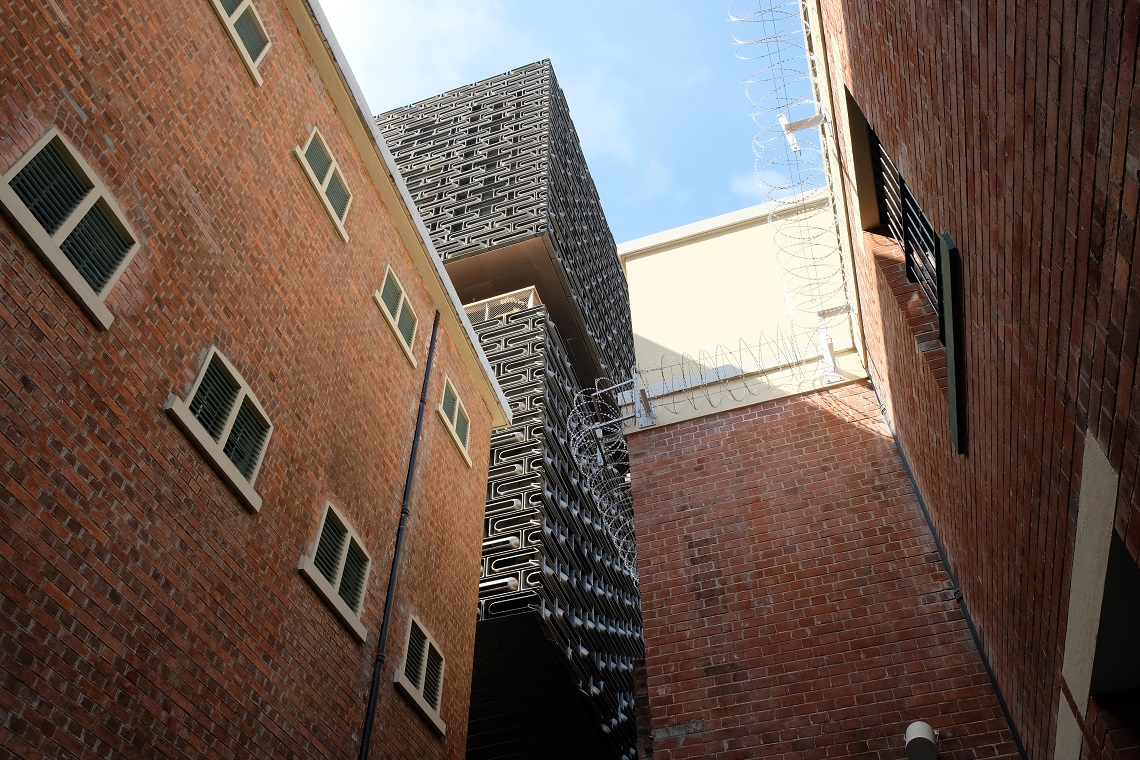

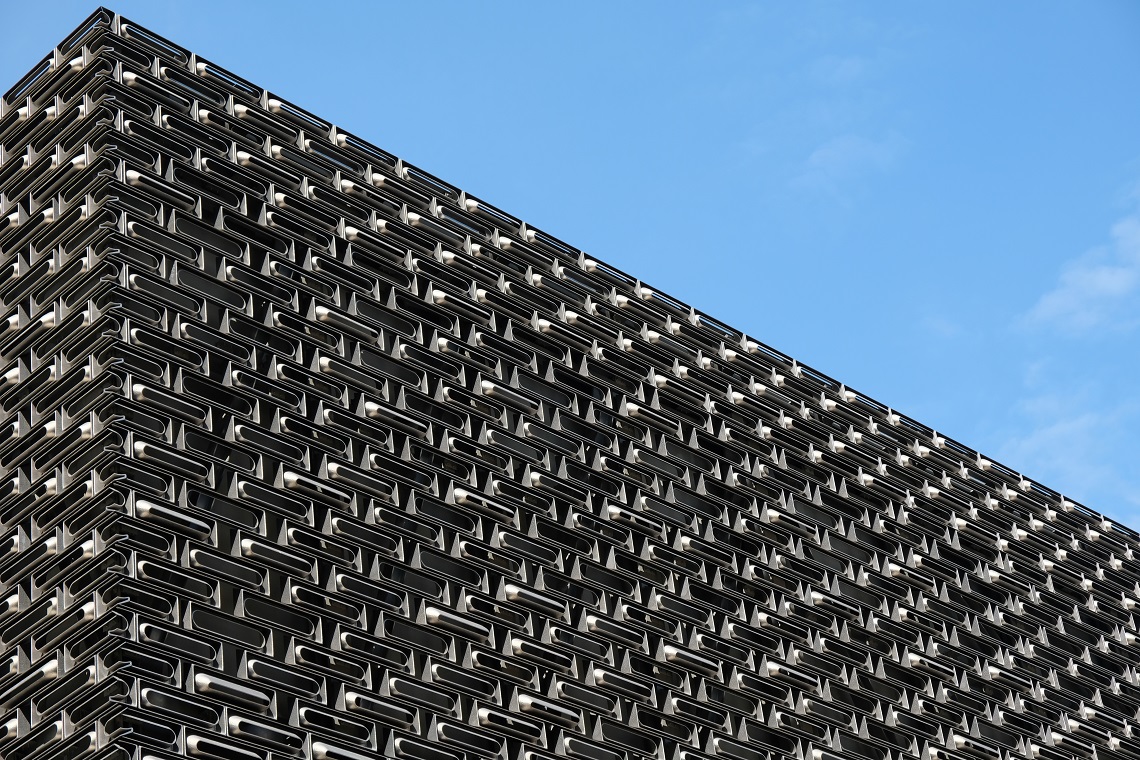




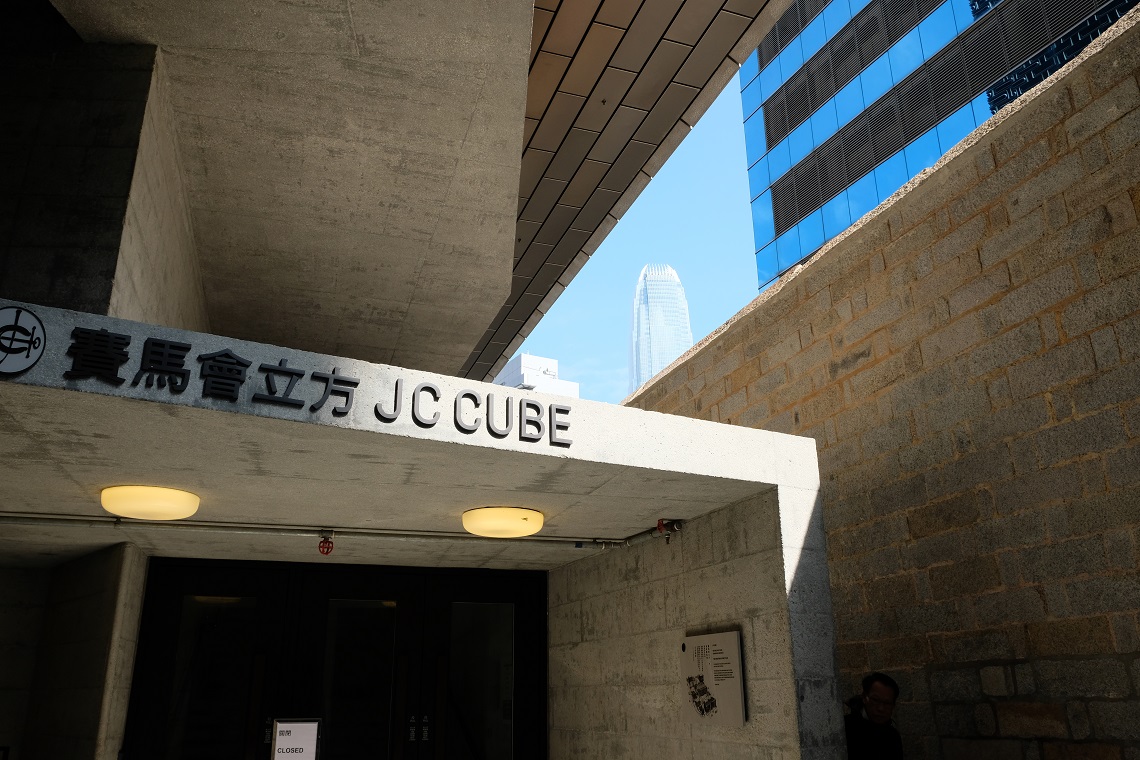
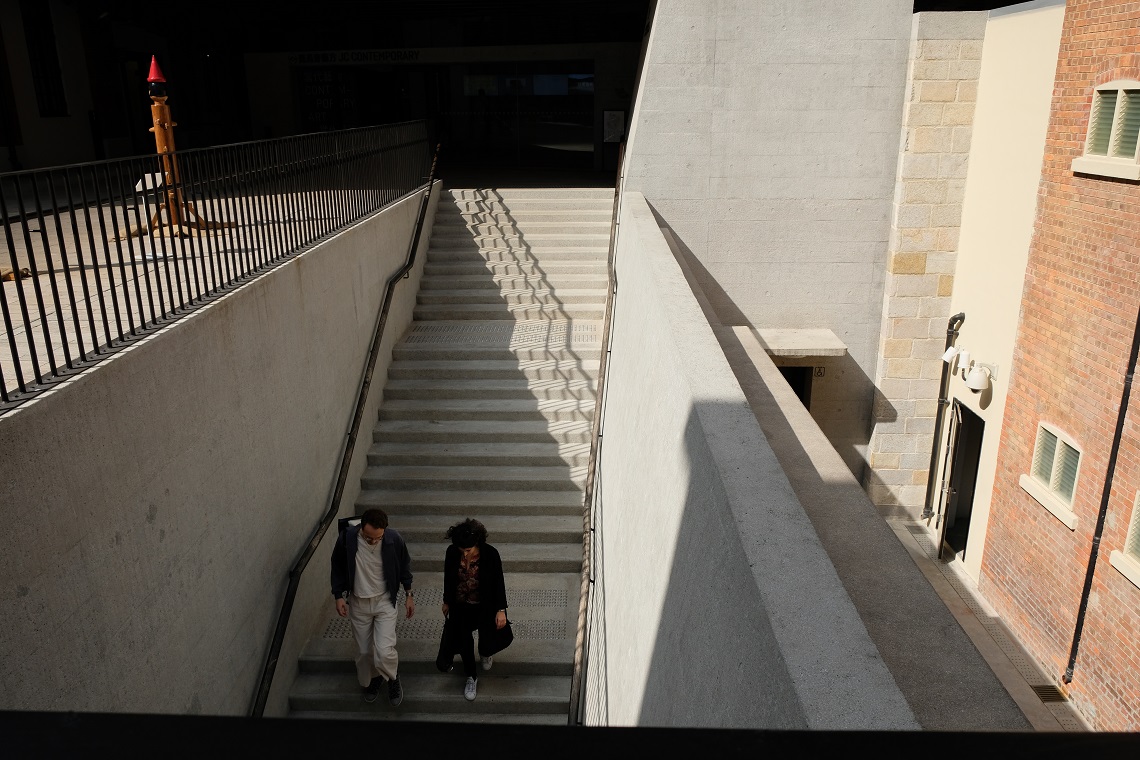
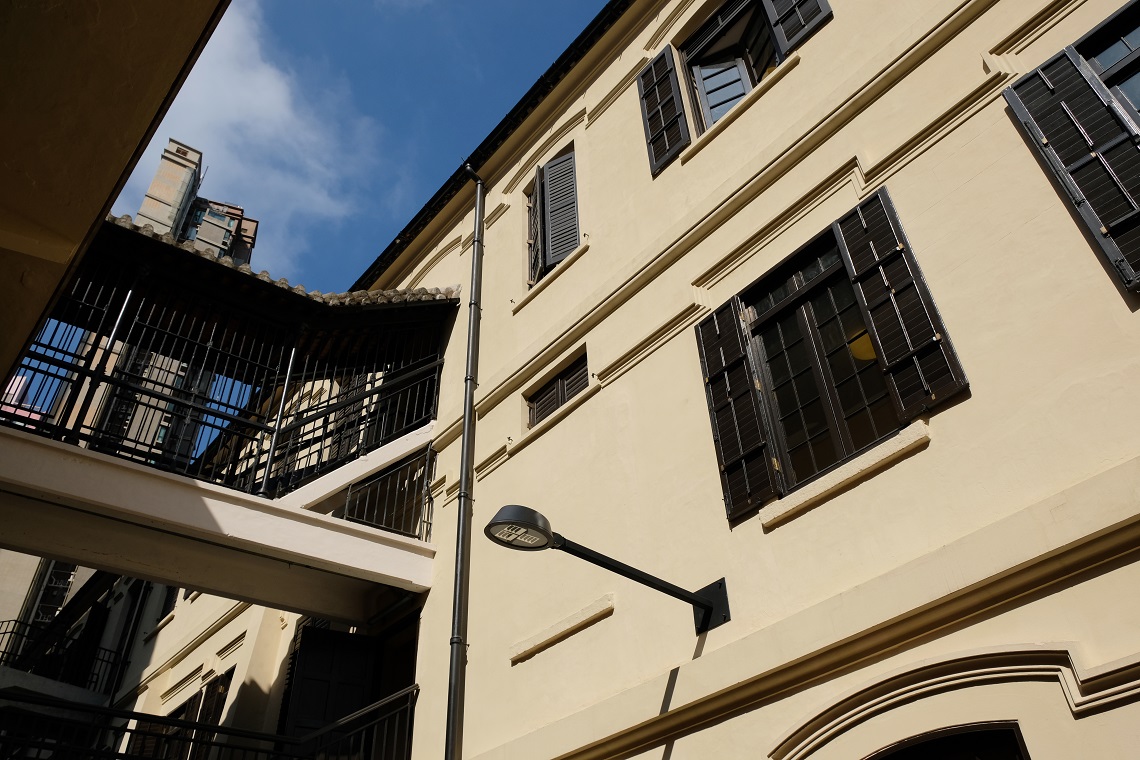







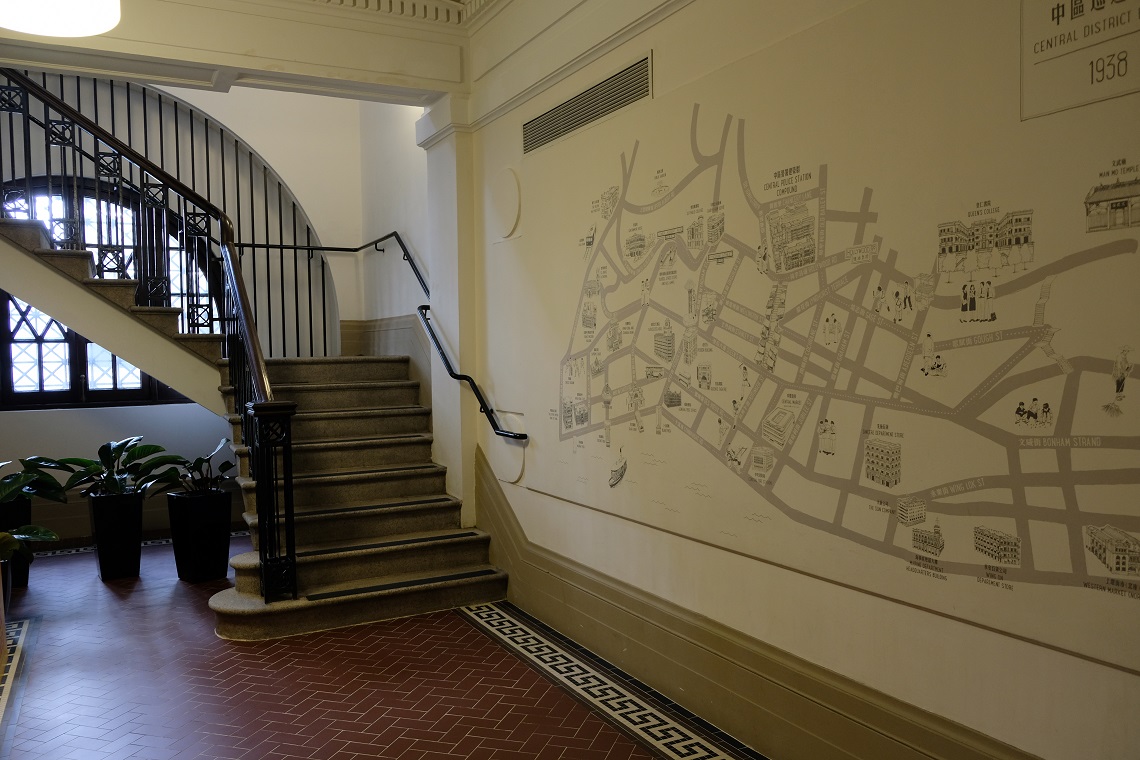
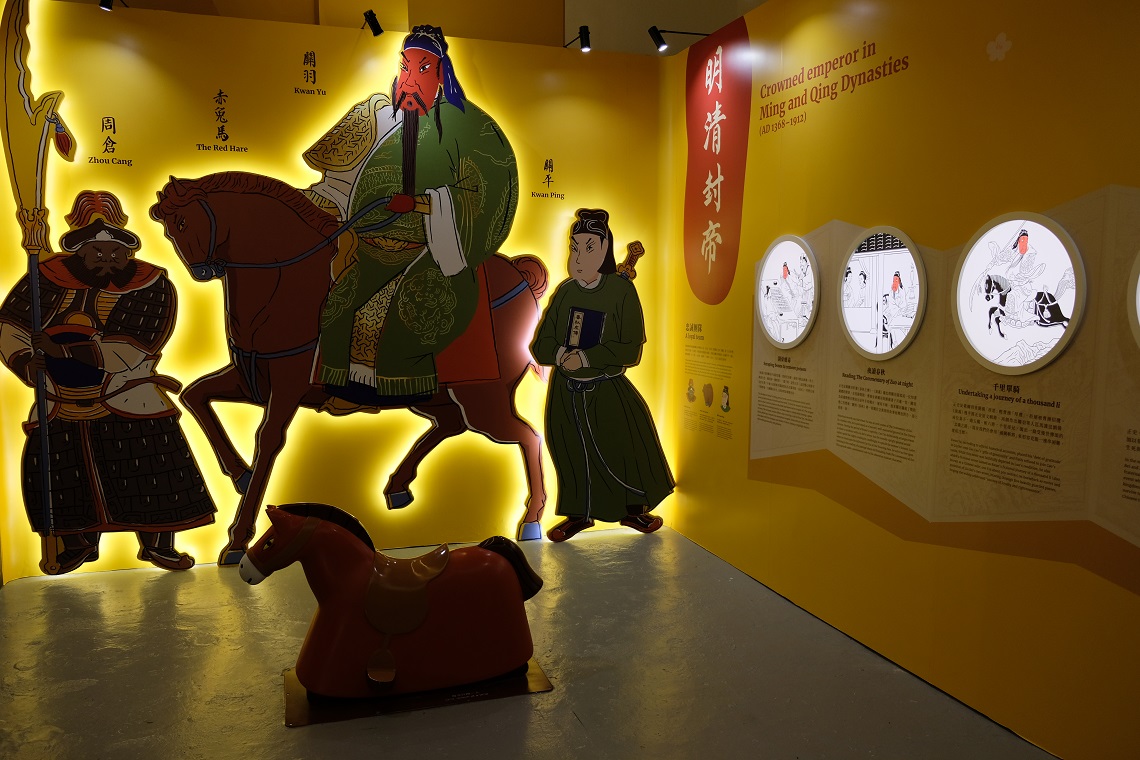
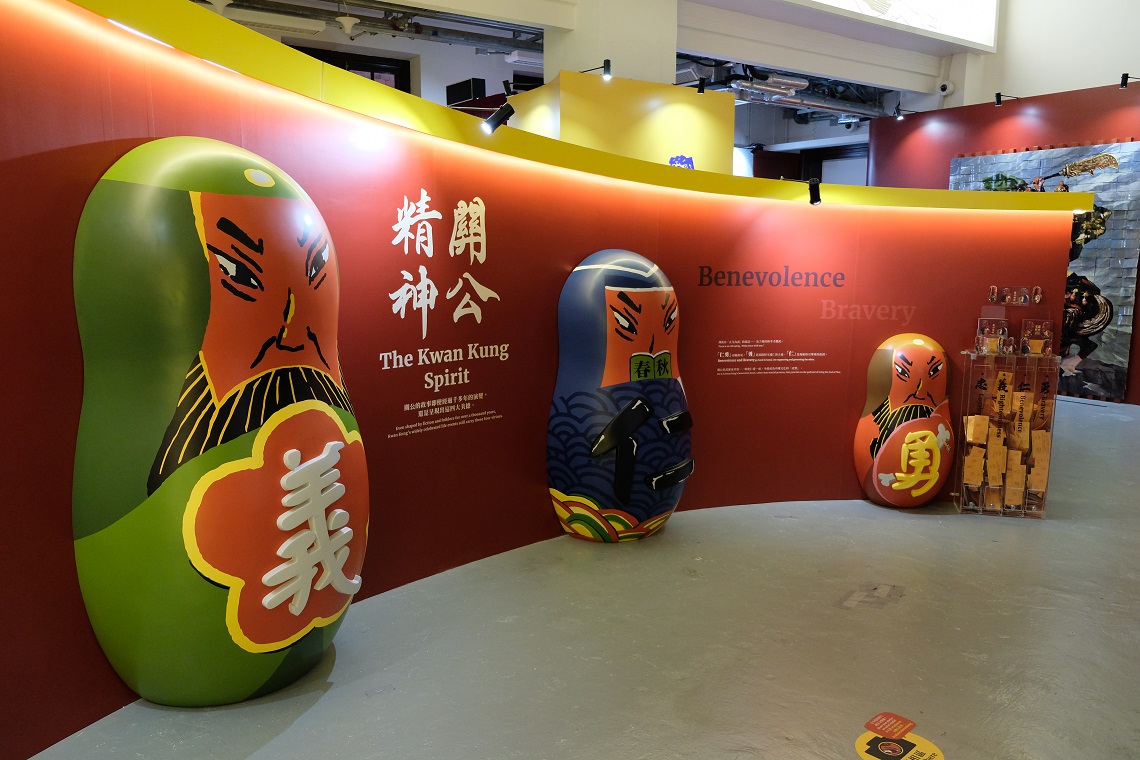
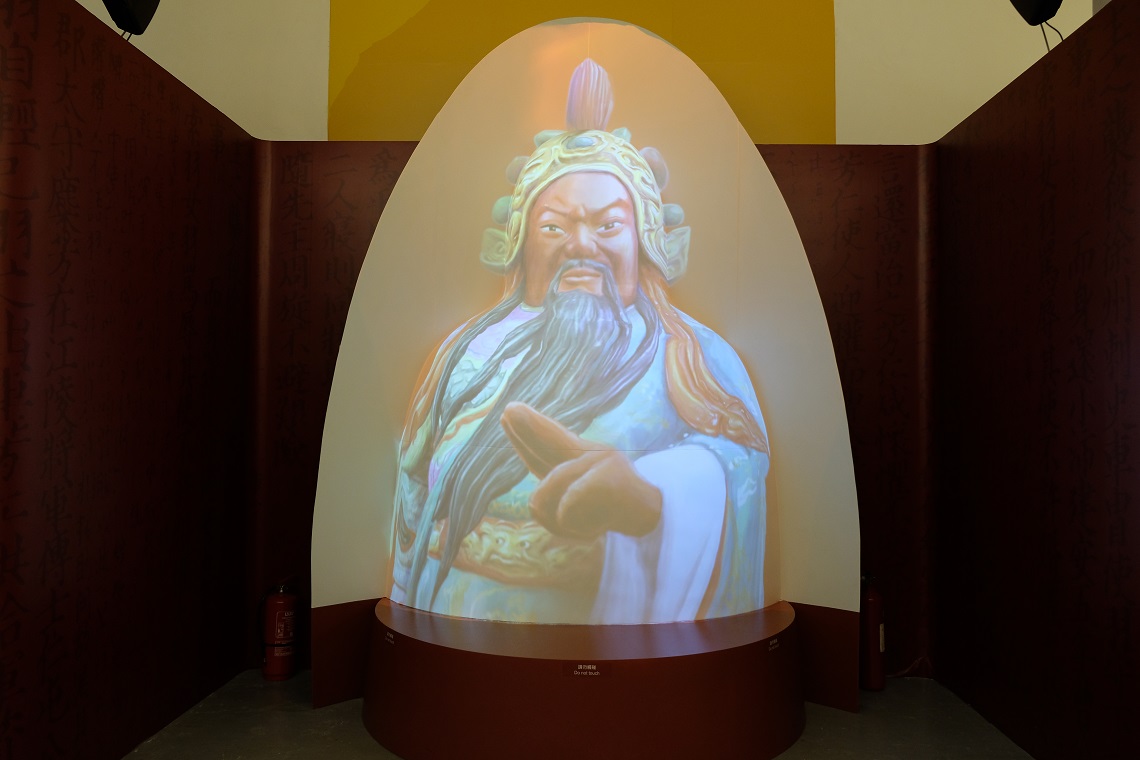
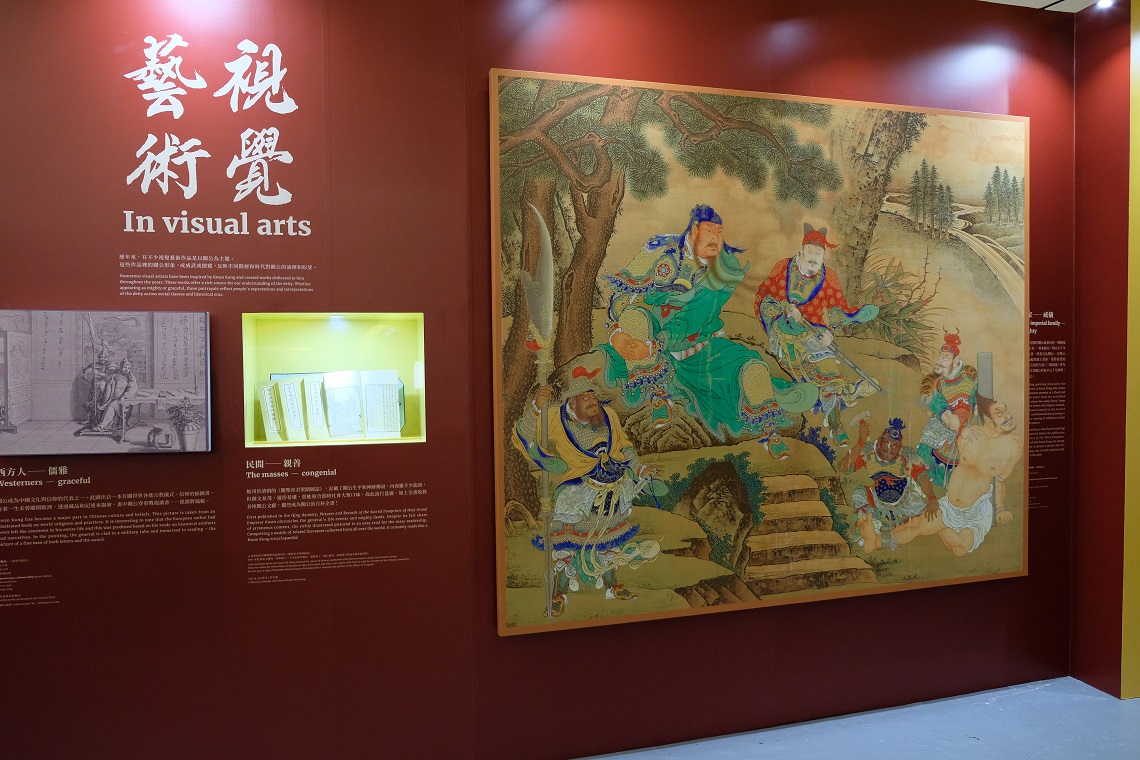


when past and present cross over the result can be beautiful
LikeLiked by 2 people
Indeed. And when done carefully and sensibly, preservation projects like Tai Kwun will result in an exciting addition to a city’s urban landscape.
LikeLiked by 1 person
breathtaking views
LikeLiked by 1 person
And this all is located right in the heart of the city.
LikeLiked by 1 person
super amazing would love a tour, bucket list loading
LikeLiked by 1 person
Love this place! Actually, I didn’t know that this place exists until I saw a group of party-goers went to this venue. I walked in and was instantly charmed by its colonial architecture. So I decided to go back the next morning. I didn’t know that you can walk beneath the cube 🙂 By the way, the monkey is still there haha.
LikeLiked by 1 person
It’s a pretty place, isn’t it? I’m glad they restored this compound because now we all can see the true value of a heritage building when it is not demolished. I guess the monkey was a part of some sort of marketing campaign.
LikeLiked by 1 person
What a joy in a city where my first image is of high-rise. Your post reminded me of my home town and how fortunate people are there that so many of the old buildings still stand reflecting a similar era to the tasteful HK police station.
LikeLiked by 1 person
This is the kind of place many people not expect to see in a city like Hong Kong. Other cities across the globe can certainly take note of how this preservation project can benefit the local community more than if it was demolished.
LikeLiked by 1 person
Great to see that grand old mango tree amid the revitalization, and that around the world we’re starting to understand that preserving the past can be a more valuable practice than building something new. Great post, Bama! 🙂
LikeLiked by 1 person
My thoughts are exactly the same as yours, Kelly. Tai Kwun is a great example for cities like Yangon to keep their heritage buildings intact. It’s also encouraging to see that in Indonesia more and more people are becoming aware of the importance of preserving such architectural heritage. Thanks Kelly!
LikeLiked by 1 person
How wonderful that the complex was saved and given a new lease of life. The old buildings were built with so much care and a real aesthetic rather that being something completely practical like the high-rises. Interesting post Bama.
Alison
LikeLiked by 1 person
It’s an antidote to the rather monotonous glass skyscrapers that have defined the city today. If only they kept that beautiful General Post Office building! Thanks Alison.
LikeLiked by 1 person
What a fascianting combination of old and new. The monkey is quite the eye grabber I have to say. Loved the later photo of the framing of the monkey with the arch. It does look toasty warm for yoru visit Bama. I smiled at the reference to the thick coats people wear at this time of year. We as Canadians when traveling are often wearing summer outifts while locals are in parkas. 🙂
LikeLiked by 1 person
Thanks Sue! For a Canadian standard, the weather was probably hot. But for me, coming from a hot and humid place, it was rather a pleasant day. 🙂 I’ve been reading news about the polar vortex, and I can’t imagine how cold -30 or -40 feels.
LikeLiked by 1 person
It’s impossible to explain Bama. Days like today I feel sorry for anyone visiting from a warm weather homeland. It must be shocking.
LikeLiked by 1 person
I seemed to have missed out this place on my recent visit in December.
LikeLiked by 1 person
At least now you know that the next time you come to Hong Kong there’s this interesting place to explore. 🙂
LikeLiked by 1 person
Gosssh… is it HK? How could I missed out those places? Ough… I have to go back…
Mas Bama, ini sungguhan lhooo… beneran ini di Hong Kong? 😀
Tapi jujur sih, saya sangat ‘turis’ di Hong Kong, ketika jalan di sekitaran Escalators saja, gak bisa lama-lama… sehingga saya terbengong-bengong baca postingan ini. Jadi mungkin mas Bama dan mas James datangnya ke dunia peri yang lain gak bisa liat… Jadi beneran ini di HK? 😀
LikeLiked by 1 person
Hehe, iya mbak, ini di Hong Kong.. Kecuali saya selama di sana sebenernya mimpi ya. 😀
Di Hong Kong banyak tempat menarik yang bisa dijelajahi mbak, selain pusat-pusat perbelanjaannya dan gedung-gedung pencakar langitnya. Nanti postingan saya selanjutnya adalah tentang suatu pulau kecil di Hong Kong yang suasananya tenang dan santai, beda banget sama suasana kota Hong Kong.
LikeLiked by 1 person
I could scarcely believe my eyes when we walked into the courtyard, Bama… after getting used to overly commercial and undeniably tacky heritage conversions (like Western Market for instance), Tai Kwun felt like a game-changer. It is definite proof that architectural preservation and rehabilitation in Hong Kong has come a long way in the past two decades. My boss at work was there just the other week and he exclaimed that sitting in the courtyard, it didn’t feel at all like Hong Kong, or even any other city in Asia. I’m so glad these grand old buildings were never torn down in the city’s rush to modernize.
LikeLiked by 1 person
I’m glad on the same day you also took me to Western Market to give me some context on how preservation projects have been carried out in Hong Kong with varying degrees of success — the work done at Tai Kwun was definitely much better. This trip to Hong Kong really opened my eyes about how advanced urban renewal has gone in the city, and how much potential Jakarta has to make it a more exciting city to live in.
LikeLiked by 1 person
Very interesting blog post. Thanks!
LikeLiked by 1 person
Glad you enjoyed this, John and Susan!
LikeLike
I don’t remember seeing Tai Kwun when I was there last, which is a shame! It’s good that something, if anything, survived of that time and I hope other places (say Vientiane, Hanoi, Pnomh Penh) keep their historic buildings. The modern art museum stitched on top seems a bit incongrous and looks as if they made it out of massive paper clips! However it has a certain je-ne-sais-quoi; it wouldn’t go amiss in Half Life, if you’ve ever played that game.
LikeLiked by 1 person
When were you in Hong Kong the last time? Tai Kwun might have been opened by then, but the fact that it is somewhat ‘hidden’ because of its high-rise surroundings may as well make it difficult for foreign visitors to find it. When you mentioned those Southeast Asian cities, another place popped up in my head: Yangon. Decades of isolation Myanmar/Burma suffered from helped preserve its British colonial buildings which are among the most beautiful and finest in the region, and now that the country has opened up at least it can learn from its neighbors that preserving historic buildings will actually bring many benefits.
I’ve heard of Half Life but never play it myself. The only FPS game I’ve ever played is Counter Strike, and it made my head dizzy! People say I’m an old soul. 😀
LikeLiked by 1 person
Only counter strike! You missed out buddy. I was in Hong Kong last 2 years ago, give or take.
LikeLiked by 1 person
I know, right? The only games I want to play now are the ones I played when I was a kid! 😀
LikeLiked by 1 person
I like shiny and new and modern, but what makes my heart and aesthetic senses even happier is a mix of old and new. It almost shows more skill to me and, of course, it means less construction waste. The hard part is recognizing and then deciding which old stuff is worth keeping, I think, but this one seems like it was a no-brainer!
LikeLiked by 1 person
Make sure you visit Tai Kwun when you’re in Hong Kong, Lex. You would enjoy it! The preservation work has been carried out really well (there’s one section of the complex that was still under renovation when I was there) and the modern additions make this compound even more interesting. Other historic compounds across the globe should take note!
LikeLiked by 1 person
How many degree Celcius was winter in Hong Kong then?
I’m glad that Asia countries are starting to give more concern to the old buildings as preservation. I agreed that the old buildings make the city prettier and more dynamic.
Anyway, the terracotta-white-stripped buildings reminded me of such architecture around Dataran Merdeka, KL.
LikeLiked by 1 person
I think it was around 22-24 degrees Celsius if I remember it right.
Exactly my thoughts, Nug. And I see cities in Indonesia are also starting to realize the potentials of their old buildings. It would be great to see well-done preservation projects like Tai Kwun carried out in Indonesia. Is it the Sultan Abdul Samad Building you’re talking about?
LikeLike
I see, it’s like our daily climate here in Bandung then.
Ah yes, i think that Bangunan Sultan Abdul Samad.
LikeLiked by 1 person
I’m glad this building was saved and didn’t become another highrise, though I must say that it being surrounded by all that “verticalness” somehow makes it stand out all the more. The monkey just cracks me up…what a fun element (as you know I enjoy the playful element in architecture). Looks like a fascinating place that you’ve captured beautifully.
LikeLiked by 1 person
You’re right. Tai Kwun’s location and environs actually make it more special with the contrasts and all. I wonder whether the monkey is still there now, although I have a feeling it will find a new place before the typhoon season starts.
LikeLiked by 1 person
Another side of HK yaa. Interesting post as usual Mas Bama 😀
LikeLiked by 1 person
One of many parts of Hong Kong that appeals to people like me, and maybe you as well. 🙂 Thanks for reading!
LikeLike
An excellent restoration. This place was lucky to get it. Thank you for the excursion.
LikeLiked by 1 person
Lucky this place was not demolished, and lucky it was restored into such an exciting center for arts and culture.
LikeLiked by 1 person